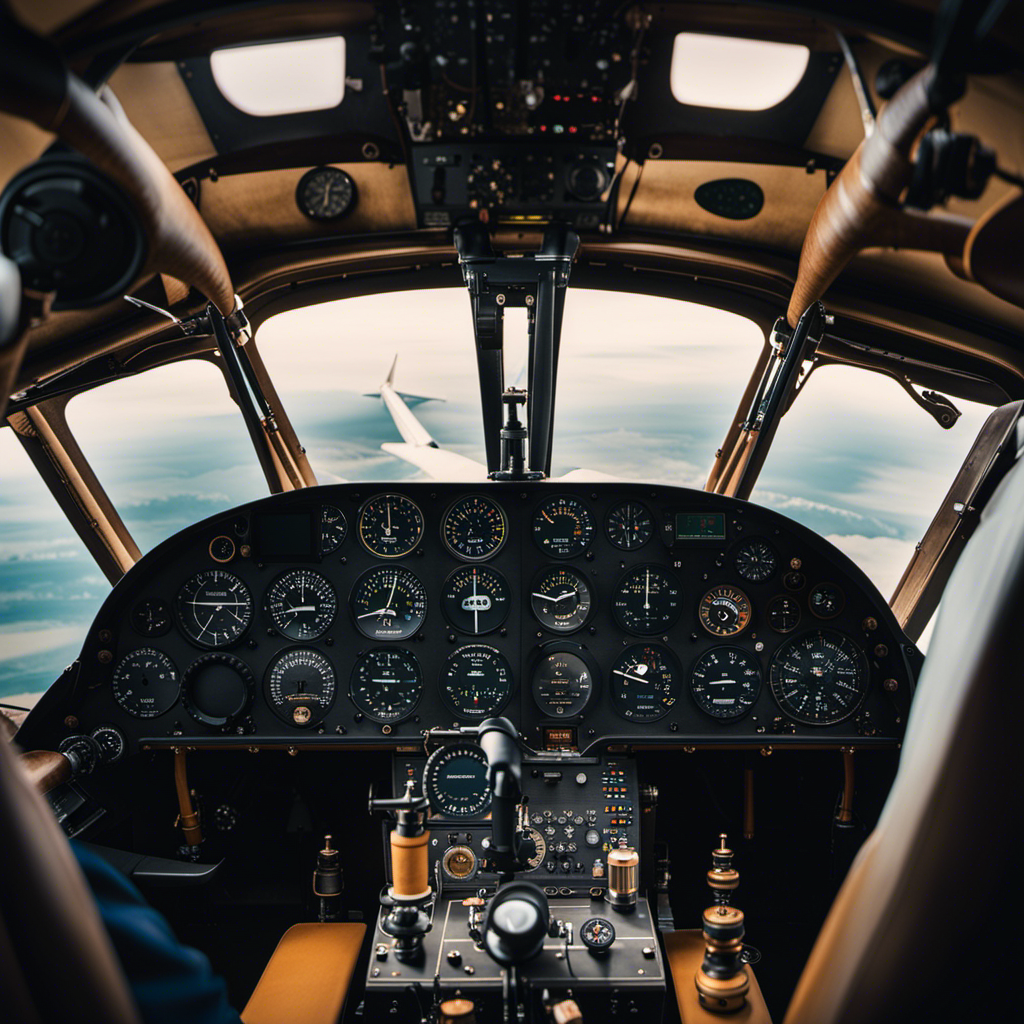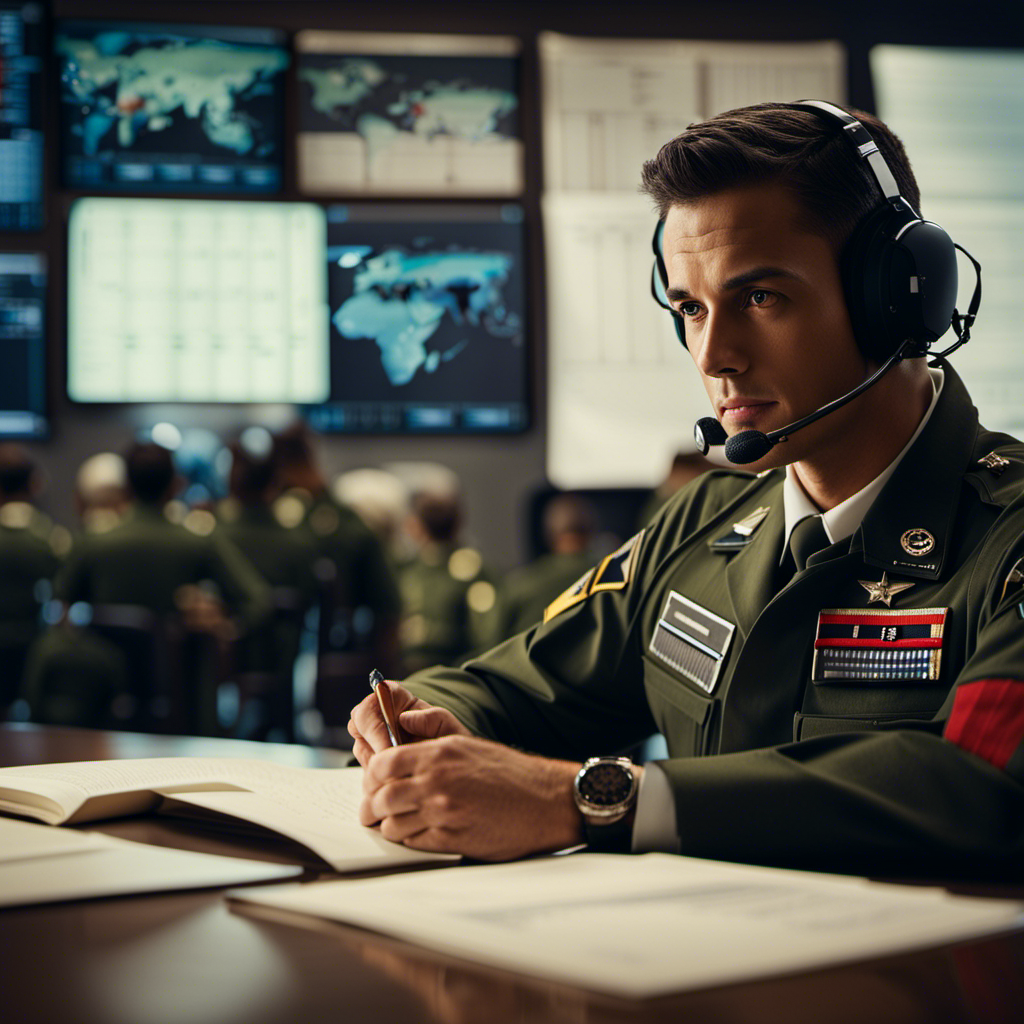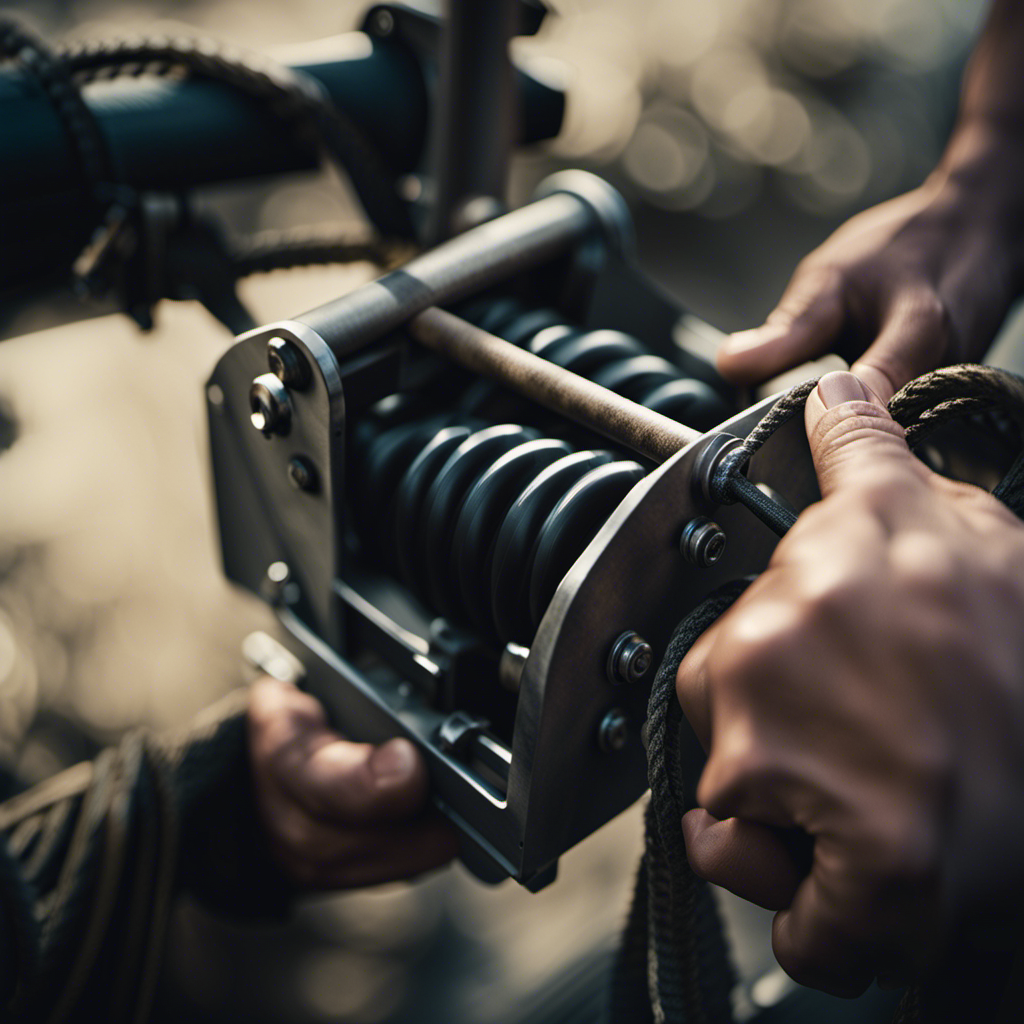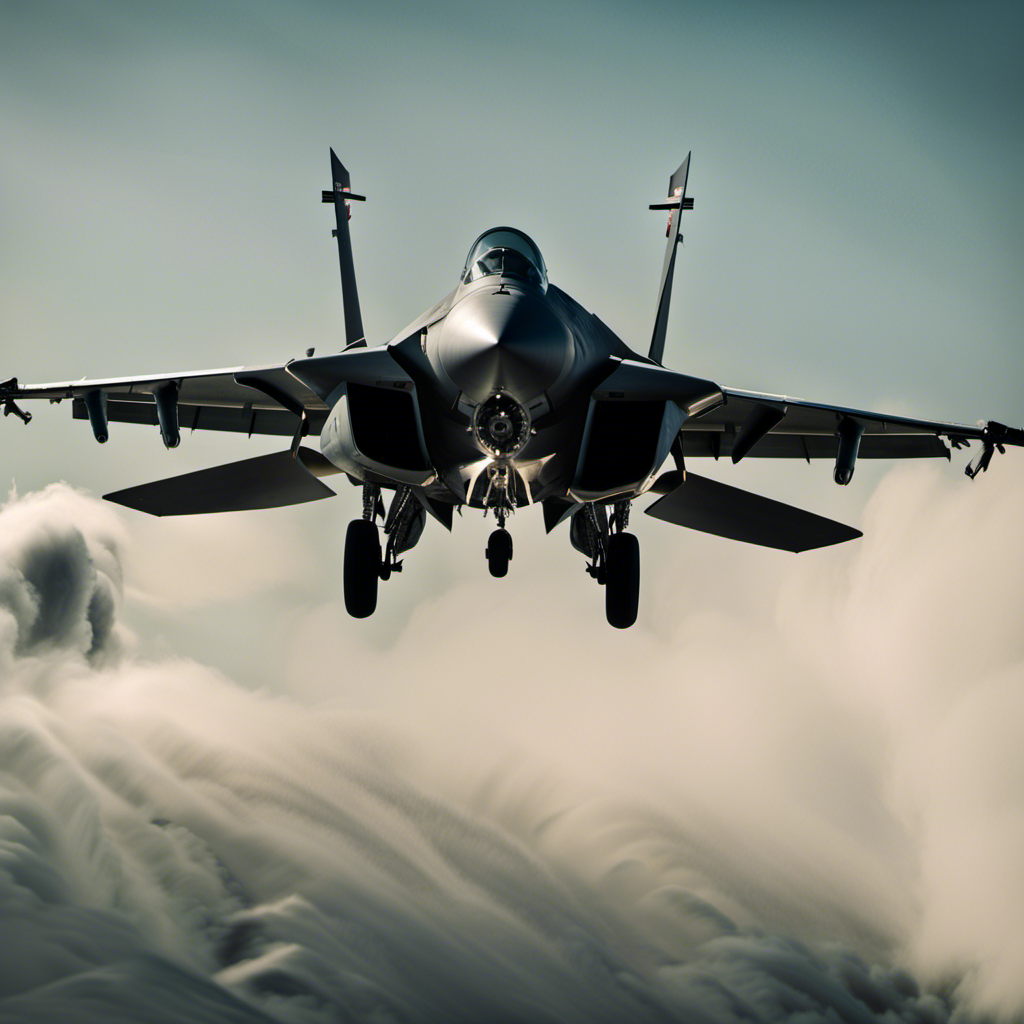Imagine yourself soaring through the air, effortlessly navigating the currents of the wind. To experience the excitement of piloting a sailplane, there are a few important requirements to consider.
You’ll need to master the basics, acquire the necessary training, and familiarize yourself with the equipment. Preparing for a sailplane flight involves honing takeoff and landing techniques, as well as enhancing your skills with advanced maneuvers.
Safety and emergency procedures are crucial, and joining the sailplane community will provide invaluable support.
So, let’s dive into the world of sailplane flying and embrace the joy it brings.
Key Takeaways
- Understanding the basics and principles of sailplane flying is essential before taking flight.
- Acquiring the necessary training and licenses from a reputable flight school is crucial for becoming a glider pilot.
- Continuing education and advanced training are important for enhancing skills and staying updated with the latest techniques and procedures.
- Safety and maintenance are vital to ensure the sailplane is in optimal condition for safe and efficient flight.
Understanding the Basics of Sailplane Flying
Understanding the basics of sailplane flying is essential for anyone wanting to fly a sailplane. Before you take to the skies, it is crucial to familiarize yourself with the key elements of this unique form of aviation.
First and foremost, you must grasp the principles of aerodynamics and how they apply to sailplanes. This includes understanding the forces acting on the aircraft, such as lift, drag, weight, and thrust.
Additionally, you need to learn about the various controls and instruments used in a sailplane, such as the ailerons, elevator, rudder, and altimeter.
Furthermore, it is important to comprehend the different types of sailplanes and their specific capabilities. By gaining this knowledge, you will be well-prepared to move on to acquiring the necessary training and licenses, which will be discussed in the next section.
Acquiring the Necessary Training and Licenses
To acquire the necessary training and licenses for glider piloting, you should consider enrolling in a reputable flight school that specializes in glider training. This will provide you with the knowledge and skills required to operate a glider safely and effectively.
Once you have completed the necessary training, you can then obtain a glider pilot license, which will officially certify you as a qualified glider pilot.
Additionally, it is essential to continue your education and pursue advanced training to further enhance your skills and knowledge in the field of glider piloting.
Enrolling in a Flight School
When enrolling in a flight school, you’ll need to complete the necessary paperwork and provide any required documentation. This includes filling out forms with your personal information, such as your name, address, and contact details.
You may also need to provide proof of identity, such as a valid driver’s license or passport. Additionally, flight schools may require you to submit medical certificates to ensure that you are physically fit to fly.
These documents will be reviewed by the flight school administration, who will assess your eligibility and suitability for training. Once you have completed the enrollment process, you can begin your journey towards obtaining a glider pilot license.
This involves further training and assessments to demonstrate your competency in flying sailplanes.
Obtaining a Glider Pilot License
Once you’ve completed the necessary paperwork and provided the required documentation, you can start working towards getting your glider pilot license. To obtain your license, you will need to follow these steps:
- Complete the required flight training hours under the supervision of a certified flight instructor.
- Pass a written examination that covers topics such as aerodynamics, weather, navigation, and regulations.
- Successfully complete a practical flight test, where you will demonstrate your knowledge and skills in operating a glider.
These requirements ensure that you have the necessary knowledge and skills to safely operate a glider.
Once you have obtained your glider pilot license, you can further enhance your skills and knowledge through continuing education and advanced training programs. These programs allow you to explore advanced flying techniques, navigation strategies, and aerodynamic principles, making you a more proficient and confident glider pilot.
Continuing Education and Advanced Training
Continuing your education and receiving advanced training as a glider pilot can greatly enhance your skills and knowledge in operating a sailplane. It is important to stay updated with the latest techniques and procedures to ensure a safe and efficient flight. By pursuing advanced training, you can further develop your understanding of aerodynamics, weather patterns, and navigation.
Additionally, advanced training programs often include specialized courses that focus on advanced maneuvers, emergency procedures, and cross-country flying. These courses provide hands-on experience and allow you to refine your skills under the guidance of experienced instructors. By investing in your education and training, you can become a more confident and proficient glider pilot.
Transitioning to the next section, familiarizing yourself with sailplane equipment is another crucial aspect of becoming a skilled pilot.
Familiarizing Yourself with Sailplane Equipment
Before you take to the skies in a sailplane, it’s crucial to familiarize yourself with the various components and features of the aircraft. This discussion will cover three key points: cockpit instruments and controls, safety gear and emergency equipment, and maintenance and inspections.
Understanding these aspects will ensure that you are equipped with the necessary knowledge to operate the sailplane safely and efficiently.
Cockpit Instruments and Controls
The cockpit of a sailplane has various instruments and controls that are essential for flying. As the pilot, you will have access to a wide range of tools that will help you navigate the skies.
The most important instrument is the altimeter, which measures the altitude of the aircraft. Additionally, you will have an airspeed indicator, which tells you how fast you are flying, and a variometer, which indicates the rate of climb or descent.
The cockpit also houses the control stick, which allows you to maneuver the sailplane, and the rudder pedals, which control the yaw motion. With these instruments and controls at your disposal, you will have the necessary tools to safely operate the sailplane.
Moving forward, it is also crucial to be aware of the safety gear and emergency equipment that should be on board.
Safety Gear and Emergency Equipment
In order to ensure safe operations, it’s important to have the necessary safety gear and emergency equipment on board. The safety gear includes items such as a parachute, helmet, and fire-resistant clothing. These are crucial in case of any unforeseen incidents during flight.
Additionally, having an emergency locator transmitter (ELT) installed in the sailplane can greatly aid in search and rescue efforts in the event of a crash or forced landing. It is also essential to carry a first aid kit and a fire extinguisher to handle any medical emergencies or fire accidents that may occur.
These safety measures provide peace of mind and increase the chances of survival in critical situations.
Now, let’s move on to the next section on maintenance and inspections, ensuring the sailplane is in optimal condition for flight.
Maintenance and Inspections
To ensure the safety and performance of your sailplane, you should regularly inspect and maintain its various components. Here are some important maintenance tasks to keep in mind:
- Check the control surfaces, such as the rudder and elevator, for any signs of damage or wear.
- Inspect the wing and tail surfaces for any cracks or dents that could affect the aerodynamics of the sailplane.
- Ensure that all the flight controls, including the ailerons and flaps, are operating smoothly and without any binding.
- Regularly check the landing gear, including the wheels and brakes, to ensure they are in good working condition.
By regularly performing these maintenance tasks, you can help prevent any potential issues that may arise during flight.
With your sailplane in optimal condition, you can now focus on preparing for a safe and enjoyable flight.
Preparing for a Sailplane Flight
Before flying a sailplane, it’s important to thoroughly prepare for the flight. This involves a series of meticulous steps to ensure a safe and successful experience.
One crucial aspect of preparation is conducting a comprehensive weather analysis, which includes examining the wind conditions, cloud cover, and temperature. Additionally, you must verify the availability of necessary equipment and supplies, such as a parachute, radio, and navigation charts.
It is equally vital to perform a pre-flight inspection of the sailplane, checking for any signs of damage or malfunction. Finally, you should review the flight plan, noting key landmarks and potential emergency landing areas.
By carefully following these preparatory measures, you will be well-equipped to embark on your sailplane journey.
Transitioning into the subsequent section about ‘mastering takeoff and landing techniques,’ it is essential to develop a strong foundation in these fundamental skills.
Mastering Takeoff and Landing Techniques
When it comes to launching a sailplane, you have three options: winch, tow, or self-launch. Each method has its own set of techniques and considerations.
Approaching and landing safely is crucial in sailplane flying, and it requires precise control of the aircraft’s speed, altitude, and glide path. Additionally, you must be prepared to deal with crosswinds and turbulence, which can greatly affect the stability and control of the sailplane during takeoff and landing.
Launch Methods: Winch, Tow, or Self-Launch
There are three methods to launch a sailplane: winch, tow, or self-launch.
The winch launch involves a powerful winch that pulls the sailplane into the air using a cable. This method requires a skilled winch operator to control the speed and tension of the launch.
The tow launch involves being towed into the air by a powered aircraft. The sailplane is connected to the tow aircraft by a tow rope, and once at the desired altitude, the rope is released.
The self-launch method allows the sailplane to take off on its own using a built-in engine. This method provides the pilot with more control over the launch process.
Regardless of the method chosen, once airborne, the next crucial step is to approach and land safely. By carefully monitoring the wind conditions and maintaining proper speed and altitude, the pilot ensures a smooth and secure landing.
Approaching and Landing Safely
To ensure a smooth and secure landing, pilots must carefully monitor wind conditions and maintain proper speed and altitude. Here are some key factors to consider when approaching and landing a sailplane:
- Wind direction and velocity: Assess the wind’s effect on your approach and adjust accordingly.
- Glide slope: Maintain the correct descent angle to reach the intended landing point.
- Airspeed control: Maintain the recommended airspeed to prevent stalling or overshooting the landing area.
- Flap settings: Adjust the flaps to optimize lift and control during the landing phase.
- Altitude awareness: Stay aware of your altitude and adjust your descent rate as needed.
By effectively managing these factors, you can ensure a safe and precise landing.
Now let’s move on to dealing with crosswinds and turbulence without losing control.
Dealing with Crosswinds and Turbulence
Adjusting your controls and maintaining a steady grip on the joystick will help you navigate through crosswinds and turbulence while maintaining control. Crosswinds can pose a challenge during takeoff and landing, causing the aircraft to drift off course. To counteract this, you can apply aileron into the wind to keep the wings level. When encountering turbulence, it is important to keep your inputs smooth and gradual to prevent abrupt changes in altitude. Understanding the characteristics of your sailplane and how it responds to different wind conditions will also aid in maintaining control. Here is a table to help you understand how to handle crosswinds and turbulence:
| Crosswinds | Turbulence |
|---|---|
| Apply aileron | Maintain smooth |
| into the wind | and gradual inputs |
| to keep wings level | to prevent |
| abrupt altitude | |
| changes |
Understanding Soaring Techniques
You’ll need to learn and understand various soaring techniques in order to fly a sailplane effectively.
One of the most basic techniques is thermal soaring, where you utilize rising air currents called thermals to gain altitude. By circling within the thermal, you can stay aloft for extended periods of time.
Another technique is ridge soaring, which involves flying along the ridge of a hill or mountain, using the upward wind that is deflected by the slope to maintain altitude.
Wave soaring is another technique used in mountainous regions, where you ride on the upward-moving waves of air.
Enhancing Your Skills with Advanced Maneuvers
By mastering the basic soaring techniques, you can then enhance your skills with advanced maneuvers in a sailplane. To take your flying to the next level, consider these two key areas of focus:
-
Precision Landings
-
Improve your ability to land precisely by practicing spot landings. Aim for a specific target on the runway and work on controlling your descent rate and glide path to touch down accurately.
-
Master the art of crosswind landings. Learn how to compensate for wind drift during the approach and touchdown phase, maintaining control of the sailplane despite challenging crosswind conditions.
-
Aerobatics and Advanced Maneuvers
-
Explore the world of aerobatics in a sailplane. Learn how to perform loops, rolls, spins, and other advanced maneuvers safely and confidently under the guidance of a qualified instructor.
-
Develop your skills in energy management, such as performing energy-saving maneuvers like thermalling, ridge soaring, and wave flying. Understand how to maximize lift and minimize drag to extend your flight time.
With these advanced maneuvers, you can push the boundaries of your sailplane flying and truly experience the thrill of aerobatics and precise control. However, it’s essential to remember that safety should always be your top priority.
Transitioning seamlessly into the next section, it’s crucial to familiarize yourself with safety and emergency procedures to ensure you’re well-prepared for any unforeseen circumstances that may arise during your flights.
Safety and Emergency Procedures
To ensure your safety during flights, familiarize yourself with the necessary emergency procedures and protocols. In the event of an emergency, it is crucial to remain calm and act quickly. First, locate the emergency exits and be aware of their operation.
In case of cabin depressurization, put on your oxygen mask before assisting others. If an emergency landing is necessary, assume the brace position to minimize injuries. It is also important to know how to use the onboard firefighting equipment and first aid supplies. Regularly review the safety briefing provided by the flight crew to stay updated on any changes.
Joining the Sailplane Community
When joining the sailplane community, it’s important to connect with experienced pilots for valuable insights into the world of aviation. These seasoned pilots have a wealth of knowledge and can provide you with guidance on various aspects of sailplane flying. To give you an idea of what you can learn from them, take a look at the table below:
| Topic | Insights |
|---|---|
| Weather | Understanding weather patterns and their impact on sailplane flight. |
| Navigation | Techniques for navigating and planning cross-country flights. |
| Aerodynamics | In-depth knowledge of the principles of flight and how they apply to sailplanes. |
| Safety Procedures | Best practices for handling emergencies and ensuring a safe flight. |
Embracing the Joy of Sailplane Flying
Experience the exhilaration of soaring through the skies in a sailplane, embracing the pure joy of flight.
As you glide through the air, it is important to understand the technicalities of sailplane flying. Firstly, ensure that you have completed the necessary training and obtained a valid pilot’s license. Familiarize yourself with the sailplane’s controls, including the ailerons, elevator, and rudder, which are used to control the aircraft’s movements.
Carefully inspect the sailplane before each flight, checking for any signs of damage or malfunctions. Plan your flight route, taking into account the weather conditions and airspace restrictions. During the flight, maintain a constant awareness of your altitude, airspeed, and the position of other aircraft.
Frequently Asked Questions
What are the physical requirements to fly a sailplane?
To fly a sailplane, you need to meet certain physical requirements. These include good vision, coordination, and the ability to handle the physical demands of flying, such as sitting for long periods and enduring changes in altitude and temperature.
How do weather conditions affect sailplane flights?
Weather conditions greatly impact sailplane flights. Factors like wind speed, turbulence, and thermals can either enhance or hinder performance. Understanding meteorology, wind patterns, and cloud formations is crucial for safe and efficient navigation.
Are there any age restrictions for flying a sailplane?
To fly a sailplane, you need to meet age requirements set by the regulatory authority. These restrictions vary, but typically require a minimum age of 14 or 16 years old to operate a sailplane solo.
Can sailplanes be flown at night?
No, sailplanes cannot be flown at night. Night flying requires special instruments and lighting that sailplanes do not have. It is important to only fly sailplanes during daylight hours for safety reasons.
What are the costs associated with owning and maintaining a sailplane?
Owning and maintaining a sailplane can be quite costly. Expenses include hangar fees, insurance, annual inspections, maintenance, and repairs. Additionally, there are ongoing expenses for fuel, instruments, and equipment, not to mention the occasional unexpected costs.
Conclusion
In conclusion, you’ve now gained a thorough understanding of the basics of sailplane flying. You’ve acquired the necessary training and licenses, familiarized yourself with sailplane equipment, and prepared for a sailplane flight.
You’ve mastered takeoff and landing techniques and enhanced your skills with advanced maneuvers. You’re well-versed in safety and emergency procedures.
By joining the sailplane community, you can continue to learn and grow in this exhilarating hobby. Embrace the joy of sailplane flying and soar to new heights!
With a heart that soars as high as the skies, Aria, affectionately known as “Skylark,” is the driving force behind Soaring Skyways. Her journey into the gliding world began as a young dreamer gazing up at the soaring birds, yearning to experience the weightlessness and freedom they embodied. With years of experience both in the cockpit and behind the scenes, Aria’s commitment to the gliding community is unwavering.










